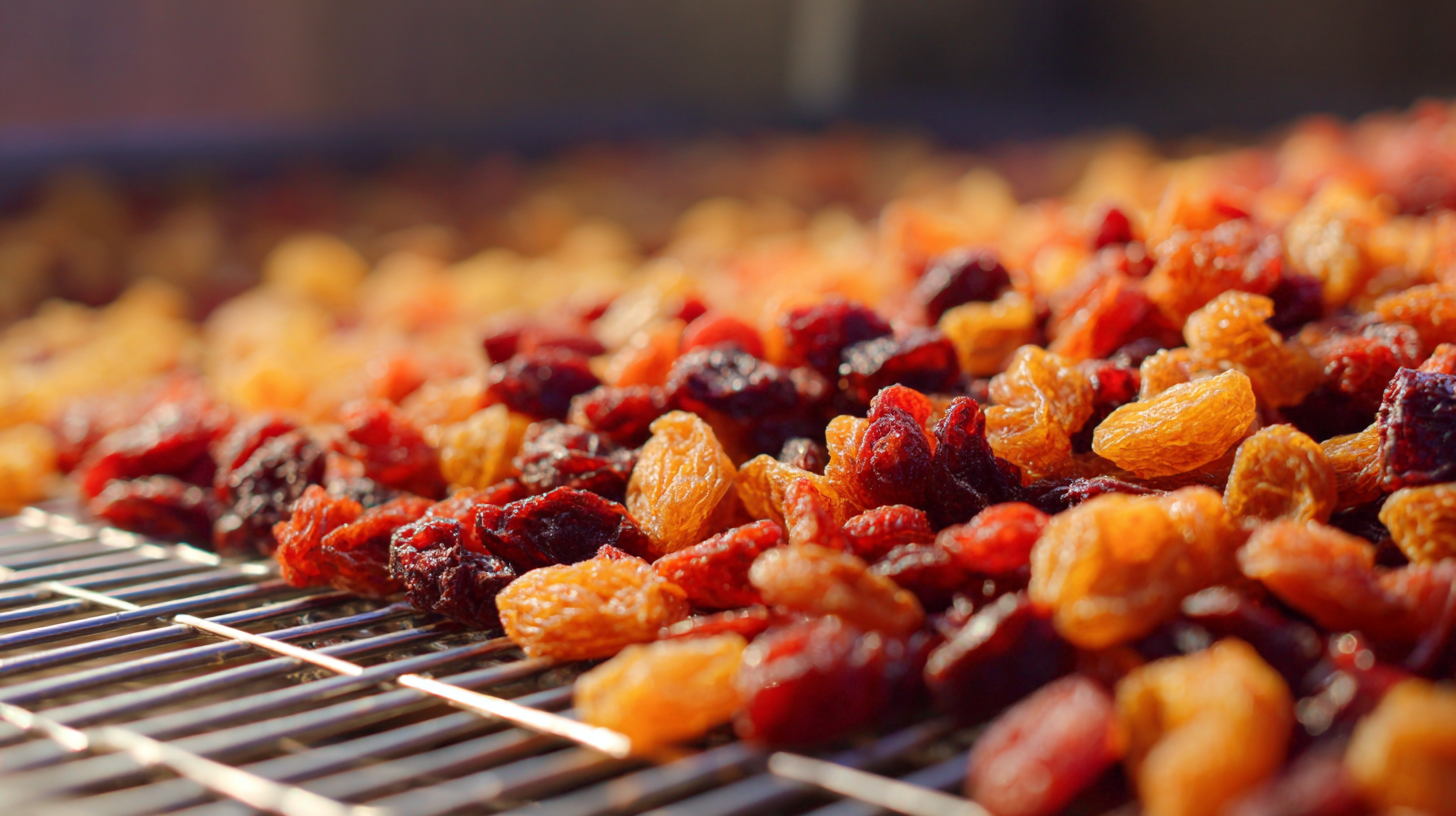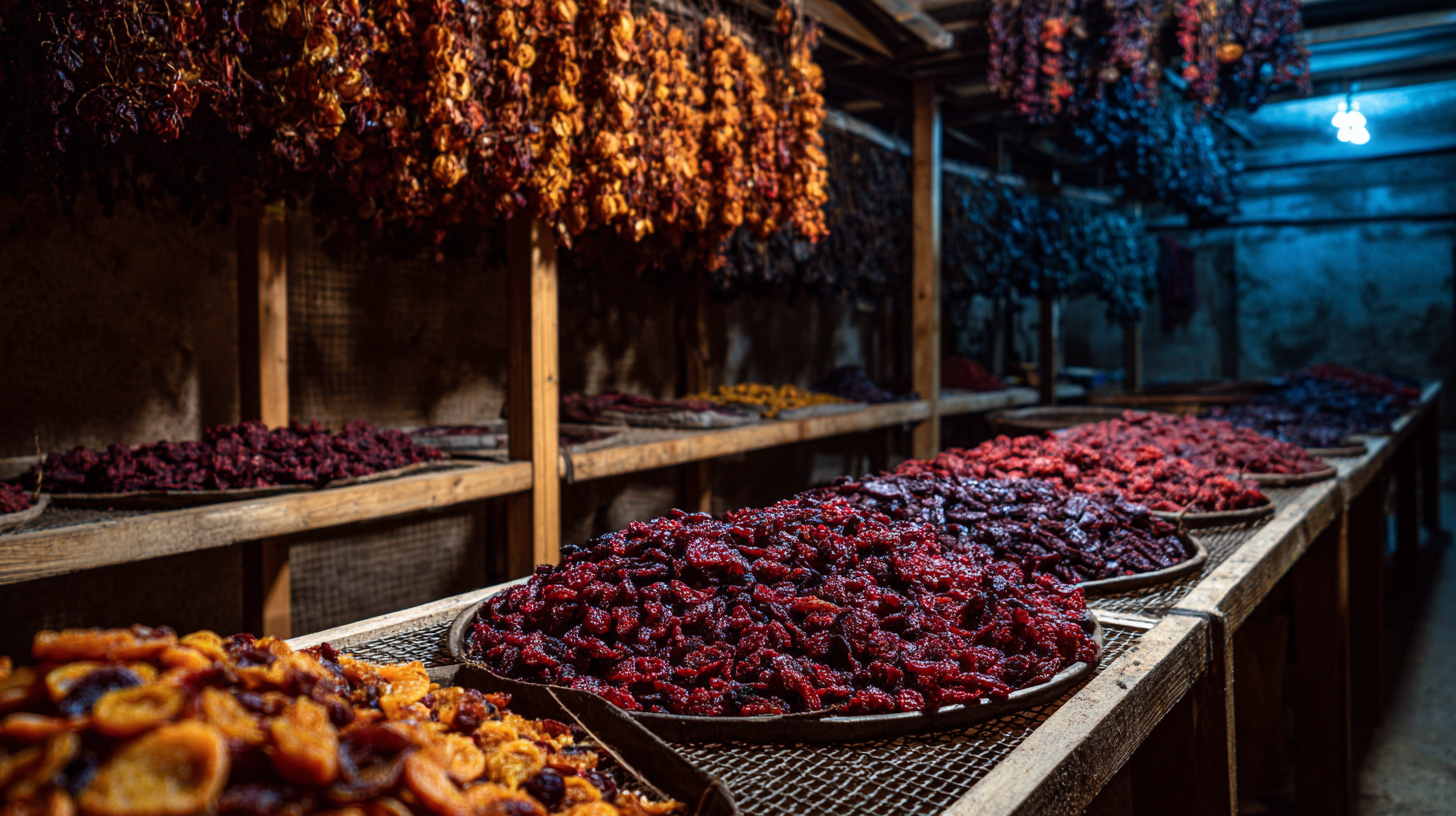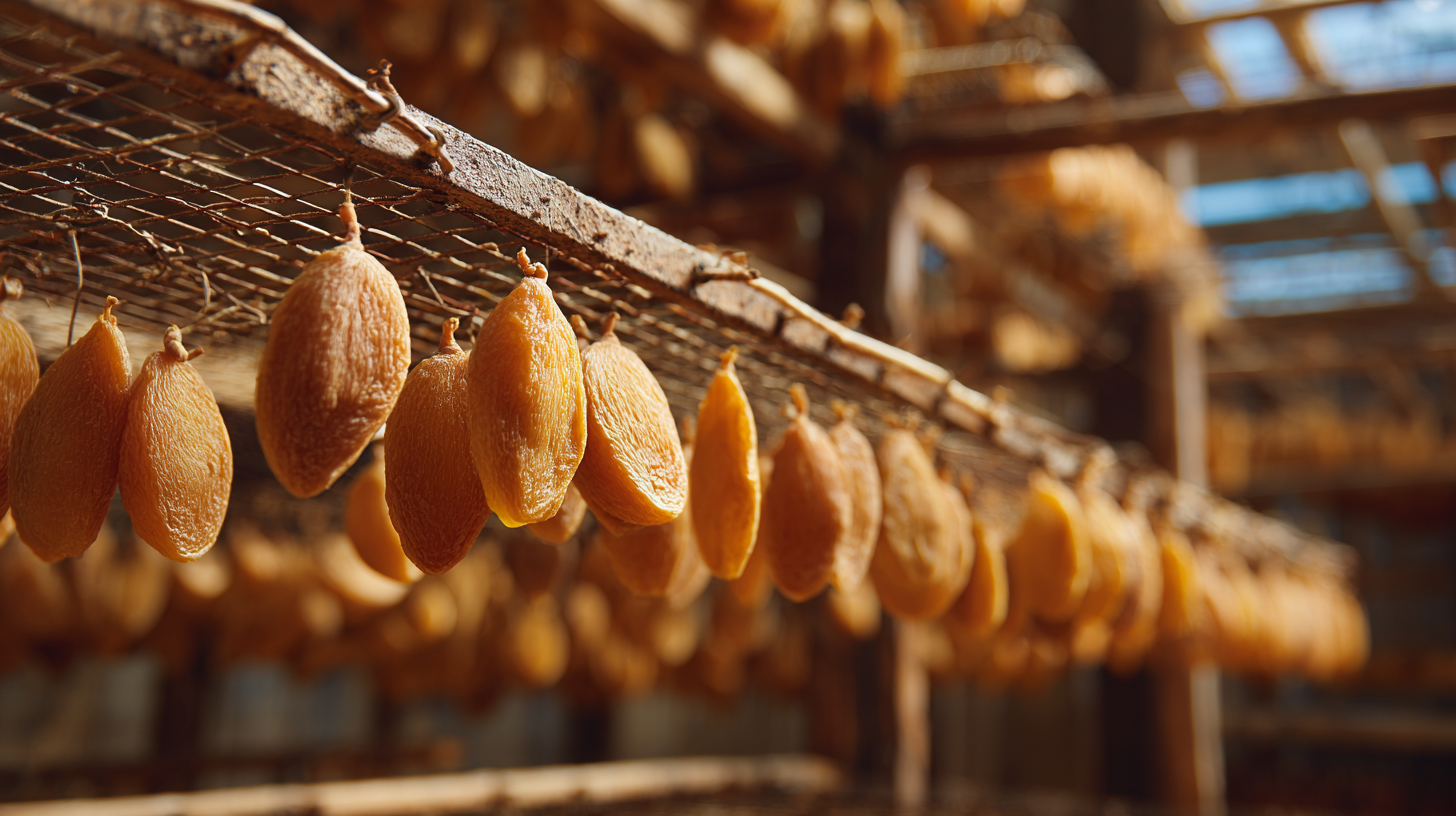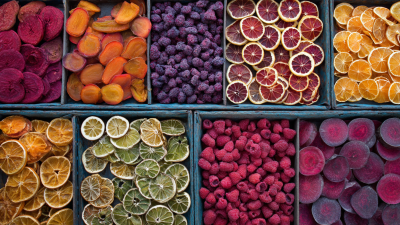Leave Your Message
As health-conscious consumers increasingly seek nutritious snacks, the demand for dehydrated fruits has surged, making the Dried Fruit Dryer a pivotal tool in food preservation and snack production. According to a report by Grand View Research, the global dried fruit market is expected to reach $11.50 billion by 2025, driven by rising consumer preferences for healthy and convenient food options.

Utilizing a Dried Fruit Dryer not only extends the shelf life of fresh produce but also retains essential nutrients, offering a wholesome alternative to traditional snacks. This article delves into the functionality and benefits of Dried Fruit Dryers, exploring how they can transform fruits into energy-packed snacks while also embracing sustainability through reduced food waste. Join us as we unlock the secrets of this invaluable appliance, paving the way for a healthier snacking revolution.
Dried fruit dryers are essential tools for transforming fresh produce into healthy, shelf-stable snacks. Understanding the functionality of these devices begins with their primary role in moisture removal, which helps inhibit microbial growth and preserves the nutritional content of fruits. Different drying techniques, such as convection and infrared drying, showcase the versatility of these machines. For home users, small and digital food dehydrators offer precise temperature control and timer settings, ensuring optimal drying results.
The drying process not only extends the shelf life of fruits but also concentrates their flavors and nutrients, making them a nutritious on-the-go snack. It's important to note that while drying preserves food effectively, factors like temperature and humidity control can significantly influence the quality of the final product. By mastering the basics of dried fruit dryers, consumers can take full advantage of fresh seasonal produce, transforming it into delicious and healthy options for any occasion.
When it comes to transforming fresh produce into healthy snacks, choosing the right type of food dehydrator is essential. There are several types of food dehydrators available today, ranging from stackable models to shelf dehydrators, each catering to different drying needs. A study on the impact of various drying technologies highlights that different models can significantly affect drying kinetics, energy consumption, and the preservation of bioactive properties in food. For instance, commercial-grade dehydrators are ideal for large batches, while smaller, more compact units are perfect for home use.

Tips: When selecting a food dehydrator, consider factors such as capacity, temperature control, and ease of cleaning. Models with adjustable temperature settings allow for precise drying based on the type of fruit, which preserves nutrients more effectively.
Additionally, some dehydrators feature horizontal airflow, which ensures even drying and better quality of the dried produce. Other considerations might include noise levels and energy efficiency ratings. Recent evaluations reveal that high-quality dehydrators can save up to 50% more energy compared to standard models, making them an environmentally friendly choice for health-conscious individuals looking to enhance their snacking options.
The drying process is a crucial technique for transforming fresh produce into healthy snacks, effectively enhancing their shelf life and maintaining nutritional value. Various methods, including air drying, freeze-drying, and microwave drying, play significant roles in preserving the essential nutrients and flavors of fruits and vegetables. For instance, studies have shown that different drying techniques can impact the anthocyanin levels in crops such as black sweet corn, which is known for its nutritional advantages. Properly executed drying methods help minimize food loss and waste while providing consumers with convenient, healthful options.
Additionally, innovations like microencapsulation in dried food products have been explored to further enhance the bioaccessibility of beneficial compounds, such as vitamin E and isoflavones found in soymilk powder. This technology ensures that essential nutrients are preserved during storage and released appropriately during digestion. As the dried fruits industry continues to evolve, understanding these key techniques and their implications on food quality and health benefits will be essential for both producers and consumers seeking healthier snack alternatives.
Dried fruits have gained recognition as a nutritious snack alternative, packing a powerful punch of vitamins, minerals, and fiber. According to a report by the International Society for Horticultural Science, the dehydration process concentrates the nutrients found in fresh fruits, making dried varieties an excellent source of antioxidants. For instance, dried apricots are particularly high in Vitamin A and potassium, important for maintaining healthy eyesight and blood pressure levels.
Moreover, the health benefits of consuming dried fruits extend beyond their rich nutrient profile. Research by the Journal of Nutrition indicates that regular consumption of dried fruits, such as figs or dates, can aid in digestive health due to their high fiber content, which can help prevent constipation. Additionally, a survey by Snack Food & Wholesale Bakery found that 70% of consumers perceive dried fruits as a healthier alternative to traditional snacks, highlighting a growing trend towards incorporating wholesome, nutrient-dense options into diets. This shift underscores the transformative potential of dried fruits, not only for personal health but also for meeting the increasing consumer demand for convenient, healthy snack choices.
 When transforming fresh produce into dried fruits, maximizing flavor and nutritional value is essential. One effective method is to choose seasonal fruits, which are not only more flavorful but also contain higher nutrient levels. Fresh fruits are known for their abundance of vitamins, minerals, and antioxidants, making them an ideal starting point for dehydration. By selecting ripe, in-season fruits, you can enhance the final taste of the dried product, ensuring a deliciously sweet and tangy result that keeps the nutritional benefits intact.
When transforming fresh produce into dried fruits, maximizing flavor and nutritional value is essential. One effective method is to choose seasonal fruits, which are not only more flavorful but also contain higher nutrient levels. Fresh fruits are known for their abundance of vitamins, minerals, and antioxidants, making them an ideal starting point for dehydration. By selecting ripe, in-season fruits, you can enhance the final taste of the dried product, ensuring a deliciously sweet and tangy result that keeps the nutritional benefits intact.
Additionally, proper drying techniques can significantly affect both flavor and nutrition. Slow drying at lower temperatures helps preserve the delicate nutrients while concentrating the natural sugars. It’s also worth experimenting with various drying methods, such as sun-drying, oven-drying, or using a dehydrator, to find the best fit for your preferred fruits. Incorporating spices or citrus juice just before drying can amplify the flavor profile, making for delightful snacks. By understanding these tips, you can unlock the full potential of dried fruits, ensuring they remain a healthy and flavorful addition to your diet.






